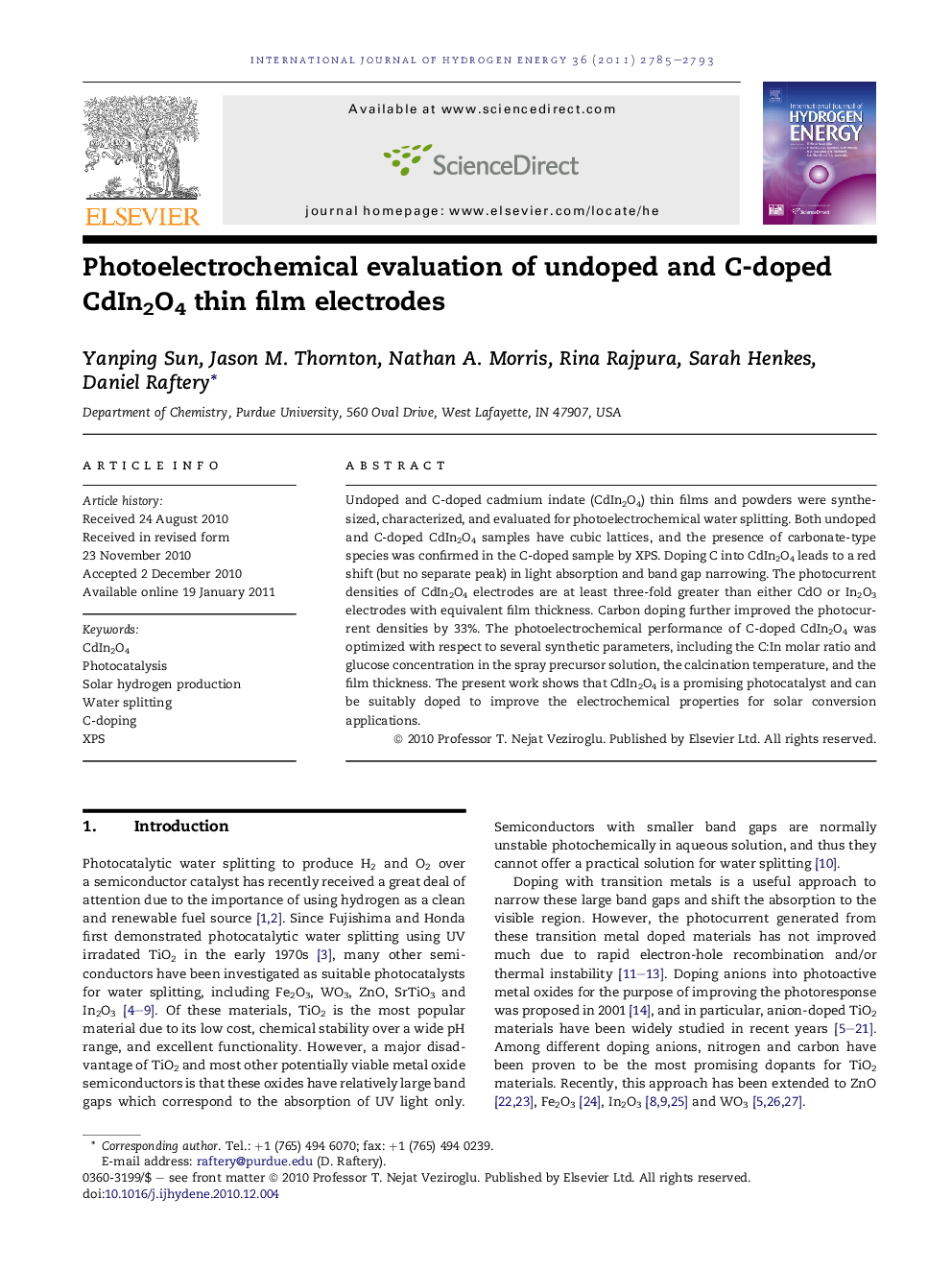| Article ID | Journal | Published Year | Pages | File Type |
|---|---|---|---|---|
| 1276392 | International Journal of Hydrogen Energy | 2011 | 9 Pages |
Undoped and C-doped cadmium indate (CdIn2O4) thin films and powders were synthesized, characterized, and evaluated for photoelectrochemical water splitting. Both undoped and C-doped CdIn2O4 samples have cubic lattices, and the presence of carbonate-type species was confirmed in the C-doped sample by XPS. Doping C into CdIn2O4 leads to a red shift (but no separate peak) in light absorption and band gap narrowing. The photocurrent densities of CdIn2O4 electrodes are at least three-fold greater than either CdO or In2O3 electrodes with equivalent film thickness. Carbon doping further improved the photocurrent densities by 33%. The photoelectrochemical performance of C-doped CdIn2O4 was optimized with respect to several synthetic parameters, including the C:In molar ratio and glucose concentration in the spray precursor solution, the calcination temperature, and the film thickness. The present work shows that CdIn2O4 is a promising photocatalyst and can be suitably doped to improve the electrochemical properties for solar conversion applications.
